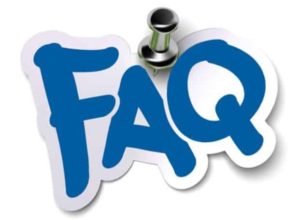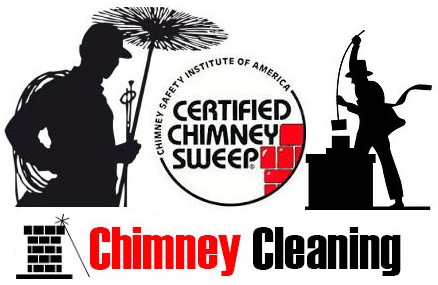
FAQs
If you have a question, look below to see if it can easily be answered. If it’s not on this page, please feel free to contact us!
Why should I choose Davis Chimney?
 We can handle any chimney problem, no matter the size.
We can handle any chimney problem, no matter the size.- You will get high-quality service and products from people who are experienced, knowledgeable, friendly, honest, and truly professional.
- We use advanced technology including video scanning of the inside of your chimney displayed on an LCD screen as part of our standard procedures
- We always begin with the easiest (most inexpensive) cure and use more extensive solutions only as necessary.
- We care about safety.
- Every Inspection is done objectively and honestly by a Chimney Safety Institute of America (CSIA)-Certified Chimney Sweep who will be wearing an official CSIA certification photo ID.
- We are fully insured.
- Every one of your questions will be answered before any work is done.
What should I expect when Davis comes to my home?
- A certified technician will present a business card and photo ID. Protective footwear will be worn to protect flooring.
- The technician will then do each of the following.
-
- Do a visual inspection of the inside portion of your fireplace
- Go up on your roof and do a visual inspection of the portion of your chimney above the roof
- Put down protective floor coverings in front of your fireplace
- Inspect your chimney using video scanning equipment that displays pictures of your flue on an LCD screen. These images are used to determine if cracks or voids exist and if a cleaning is needed.
- If needed, sweep the firebox, damper, smoke shelf, smoke chamber, flue, and gas logs (if appropriate).
- Provide a written report describing the condition of the chimney
- Clean up all work areas.
- No work is ever done without customer authorization after an estimate of the cost
- Customers are encouraged to ask questions. We want you to understand the process and result.
How often should I have my chimney inspected and/or cleaned?
According to the NFPA (National Fire Protection Association), a chimney should be inspected and or cleaned once a year depending on the design of the chimney and on usage—including the amount of wood burned and type of wood burned (seasoned or unseasoned).
Why should I have my chimney inspected?
Having a chimney inspected is a good idea because it can alert you to a wide variety of problems before they become dangerous or costly.
A thorough inspection includes the following items:
- Visual examination of the masonry (bricks and mortar)
- Crown
- Flashing
- Smoke chamber
- Liner
- Damper
- Hearth protection
- Clearances
- Firebox (the area where wood is burned)
- Flue (the inside of the chimney)
How do you clean a chimney?
Davis Chimney uses a guaranteed “no mess” cleaning method. First, we place tarps on the floor in front of the fireplace and high traffic areas. The chimney is then cleaned from the bottom. We use specialized tools to clean the firebox, smoke chamber, damper, smoke shelf (behind the damper), and flue liner. This process can take anywhere from twenty minutes to an hour.
What is the best time of year to schedule a chimney inspection and/or cleaning?
The busiest time of year for most chimney sweeps is from September through March. Therefore, we recommend scheduling inspections or cleanings between April and August. This is to avoid the scheduling backlog that often occurs because of the winter rush.
What is creosote and why is it in the chimney?
Creosote is a natural by-product of burning wood. It can be defined as a combustible deposit originating as condensed wood smoke, including tar, vapors, and other organic compounds. Creosote is flammable.
Why does my fireplace smell during the spring and summer months?
There are several possible causes for a smoking fireplace:
- A fireplace opening too large for the size of the flue
- Downdrafts
- Negatively pressurized home or business
- Breach or smoke-over problem in a chimney (one fireplace above another)
Possible solutions (not in any order) include:
- Smoke guard
- Ventilation fan
- Outside air kit
- Top-mounted damper
How do you remove animals or birds from my chimney, and how can I keep them out?
Animals can usually be coaxed out from behind the damper, but may need to be removed manually or with specialized tools. In prefabricated fireplaces, animals sometimes are located in areas other than the flue, and this requires specialized removal techniques. We’ve never had an animal we couldn’t remove.
It’s important to prevent animal invasion as well as remove them. You can prevent birds and animals from entering your chimney with chimney caps or covers and steel screening
What causes water leakage and what can I do about it?
There are several possible causes for water leakage including:
- Masonry problems (cracks in bricks or mortar)
- Porous bricks
- Flashing problems
- Cracks in the crown
- Lack of a chimney cap or cover
Possible solutions include:
- Repair or rebuild masonry
- Waterproof porous bricks
- Repair or rebuild flashing
- Repair or replace crown
- Install cap or cover
Why do I need a chimney cap?
A chimney cap serves the following purposes:
- Eliminate moisture damage.
- Water entering your chimney erodes masonry and mortar joints and will cause your damper or firebox to rust out. This leads to expensive repairs.
- Prevent bird and animal invasion.
- Chimney caps protect your chimney from nesting birds, squirrels, raccoons, and other disease-carrying animals.
- Protect against airborne ember and sparks.
- Our chimney cap has 18 gauge mesh that reduces the risk of fires caused by embers and sparks exiting from your chimney flue.
- Guard against flue blockage.
- Leaves and debris entering your chimney can cause flue blockage and lead to fire, smoke damage, or even carbon monoxide poisoning.
What is the difference between masonry and prefabricated metal fireplace?
There are three major areas of difference between masonry and prefabricated fireplaces:
- Construction Process – A prefab fireplace is built in a factory then installed in a home or business. A masonry fireplace is usually custom-built on-site.
- Materials – A prefab fireplace is constructed predominantly with galvanized steel (and a small amount of stainless steel) while masonry fireplaces typically are constructed with brick and mortar (and a few metal parts).
- Lifespan – The life expectancy of a prefab fireplace is generally 20-30 years. Masonry fireplaces, if built correctly and cared for properly, last for generations.
Both masonry and prefabricated fireplaces must be installed and maintained appropriately in order to be safe. Both can burn wood or operate with gas logs (if a gas connection is available).
How do I know if my prefabricated fireplace needs to be replaced?
You probably need to replace your prefabricated metal fireplace if you look at the fireplace from the inside of your home and you can see rust or warped metal or if you cannot obtain a UL listed replacement part (or an acceptable alternative).
What is a seasoned firewood?
Seasoned wood is wood that has been dried for a period of time. When a tree is harvested, the wood is considered “green,” and contains a lot of water, which makes it bad fuel for a fire. Different wood species contain different amounts of water and thus must be dried for different lengths of time. The amount of time required to season wood also depends on whether or not the wood has already been cut, split, or left in log form. You can often tell if the wood was seasoned by looking for cracks in the ends of the pieces of wood. All wood species will make acceptable fires if the wood is dry.
Can you tell me a little about the different types of firewood?
Sure! There are a wide variety of seasoned woods available: mesquite, oak, birch, cherry, etc. Heavier woods like oak and hickory are the preferred choices for firewood because they will burn longer and have more fuel value per piece. Lighter woods like pine, however, are great to mix with heavier wood and are perfect for use as kindling to start fires. As a quick primer, here are some fun facts about a few of the different types of firewood:
- Mesquite: This type of firewood burns really hot and is great for providing lots of home heating warmth.
- Oak: Oak is excellent firewood but it dries very slowly, requiring a long seasoning period.
- Birch: Birch is generally considered the most decorative firewood, but it also provides good heat.
- Cherry: Cherry is a great choice if you like firewood with aroma.
You can request an appointment online or contact us with your questions and concerns. Either way, we’ve got you covered!


